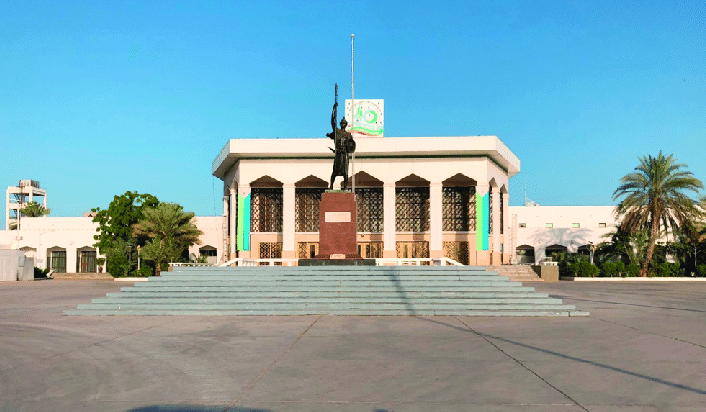Do you know about Djibouti National Monument? When it comes to Djibouti's cultural heritage and historical landmarks, one gem often overlooked is the People's Palace in Djibouti City. Nestled in the heart of this vibrant East African nation, the People's Palace stands as a testament to Djibouti's rich history and unique blend of influences. In this comprehensive article, we will delve into the intriguing story of the Djibouti National Monument, providing you with a detailed account of its history, significance, and the mesmerizing experience it offers to visitors.
Unveiling the Djibouti National Monument
A Glimpse into Djibouti’s History
Djibouti, known for its strategic location on the Horn of Africa, has a history deeply intertwined with various cultures and civilizations. The People's Palace, also known as the "Palais du Peuple," reflects this cultural tapestry, showcasing influences from Arab, French, and Somali heritage.
Architectural Marvel
One cannot help but marvel at the architectural beauty of the People's Palace. The building's design seamlessly blends modern elements with traditional aesthetics. Its grandeur is accentuated by the use of intricate mosaics, arched doorways, and ornate domes.
Symbol of Independence
The People's Palace holds a special place in the hearts of Djiboutians as it was inaugurated in 1986 to mark the country's 9th independence anniversary. The grand ceremony was attended by dignitaries from around the world, underlining Djibouti's emergence as a sovereign nation.
Djibouti National Monument: Exploring the Interior
Cultural Exhibitions
Upon entering the People's Palace, visitors are greeted by a treasure trove of Djibouti's cultural heritage. The museum within the palace boasts an impressive collection of artifacts, traditional clothing, and historical documents that shed light on the nation's evolution.
The Grand Auditorium
One of the highlights of the People's Palace is its grand auditorium, which has hosted a plethora of cultural events, including music concerts, theatrical performances, and international conferences. The auditorium's acoustics and seating capacity make it an ideal venue for various gatherings.
Djibouti National Monument: Djibouti’s Cultural Vibrancy
Art and Music
Djibouti's artistic talents shine at the People's Palace. Local artists often display their work here, giving visitors an opportunity to appreciate the nation's vibrant art scene. Traditional music performances are also a common occurrence, providing a delightful auditory experience.
Culinary Delights
Exploring Djibouti's culinary heritage is a must at the People's Palace. The on-site restaurant offers a delectable array of traditional dishes, allowing visitors to savor the flavors of Djibouti.
Djibouti National Monument: Visiting Practicalities
Location and Accessibility
The People's Palace is conveniently located in the heart of Djibouti City, making it easily accessible to tourists. The nearest airport is Ambouli International Airport, which is just a short drive away from the monument.
Opening Hours and Admission
The monument is open to visitors from 9:00 AM to 5:00 PM every day except Mondays. Admission fees are reasonable, with discounted rates for students and seniors.
Conclusion
In conclusion, Djibouti's People's Palace is a captivating destination that offers a profound glimpse into the nation's history, culture, and artistic prowess. It stands as a testament to Djibouti's enduring spirit and its commitment to preserving its heritage. A visit to this cultural treasure is not only educational but also a memorable experience for travelers seeking to explore the less-traveled corners of Africa.
FAQs
1. Is photography allowed inside the People's Palace?
Yes, photography is permitted inside the monument, but please be respectful of any restrictions or guidelines provided by the staff.
2. Are guided tours available?
Yes, guided tours are available for those who wish to have a more in-depth understanding of the monument's history and significance.
3. Can I purchase souvenirs at the People's Palace?
Yes, there is a souvenir shop on-site where you can purchase unique Djibouti-themed souvenirs.
4. Are there any nearby attractions worth visiting?
Certainly! Djibouti offers a range of attractions, including beautiful beaches, nature reserves, and historic sites. It's worth extending your visit to explore more of what this remarkable country has to offer.
5. How can I support the preservation of Djibouti's cultural heritage?
You can support the preservation efforts by donating to the Djibouti National Heritage Foundation, which works tirelessly to protect and promote Djibouti's cultural treasures.
References
- "Djibouti's Palace of the People: A True Architectural Marvel." UNESCO World Heritage Centre. https://whc.unesco.org/en/tentativelists/5936/
- "Djibouti National Museum." Djibouti Ministry of Culture and Art. http://www.culture-djibouti.com/musees/musee-national-de-djibouti
- "Djibouti: The Land of Traditions and Culture." Embassy of Djibouti in the United States. https://djiboutiusa.org/culture/
- "Palais du Peuple: Djibouti's Iconic Landmark." Djibouti Tourism. https://www.djiboutitourism.com/attractions/palais-du-peuple/
